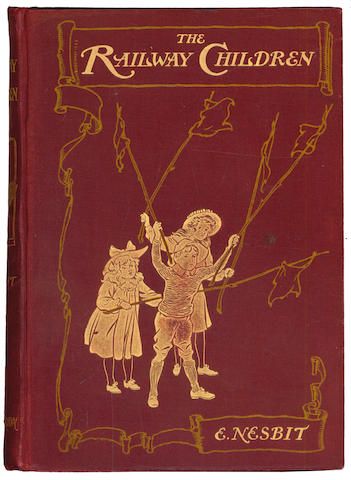How do archives collect girl authors? In this interview series, we welcome curators and archivists to share how their institutions collect and utilize materials by girls who were or became published authors in their youth. Today, we look at the papers of Edith Nesbit (1858-1924), best known as the author of many children’s novels. Special thanks to the Department of Special Collections and University Archives, McFarlin Library, University of Tulsa.
What kinds of records do you keep relating to the author?
The collection is primarily built from the work of Nesbit’s two biographers, Doris Langley-Moore and Julia Briggs. Langley-Moore had to do quite a bit of footwork in the 1930s to develop a complete and accurate profile of Mrs. Bland, and a solid portion of the papers are her correspondence to the author’s friends, family, and other associates in the literary world. There was some back-and-forth drama over G.B. Shaw not wanting to talk to Langley-Moore, but she did eventually manage to convince him. Oswald Barron also balked at the idea of having his real name in the biography, because he was worried that the revelation that he was involved in helping Nesbit write stories would damage his career and reputation! We do have some original letters by Edith Nesbit herself, along with quite a few photographs, some manuscripts and personal materials, artwork, and even tickets to the world premiere of the Railway Children film in 1971.
Do you have physical objects in the archives from the author?
We do have Edith’s clipping books, where she cut out her poems as they appeared in newspapers. She also hand-wrote quite a few poems in there. We have her ex-libris bookplates, which have what Doris Langley-Moore called her “special rebus”. This was a little symbol shaped like a four-leaf clover that was a stylized version of her initials, EB. She signed all her letters with this symbol.
How are the records utilized? Do researchers use items for books/articles or for historical research for movies or tv shows?
Library policy prevents me from giving you details about who accesses our materials and how they use them. I handle our photo licensing requests, and we do see a good number of questions about the photo collection and using the famous portrait of Edith at her writing desk as the cover for books.
What is your favourite object/document/record in the collections related to this author?
I actually have a pretty good answer for this! As Doris Langley-Moore was doing her research, she put out several letters through newspapers and magazines calling for reminiscences from people who may have known her. Someone named M. Mathews wrote to her, and it turned out that this person was an amateur astrologer who took it upon themselves to analyze Edith’s star signs! They drew up a little birth chart and wrote up how it likely pertained to Edith’s prospects in love, money, home, etc. The details of the “arrangement” between Hubert Bland, Edith, and Alice Hoatson were not public knowledge at the time, so the analysis leans a little ironically toward Edith and Hubert having “permanent true love,” but there’s quite a bit in there about Edith having a vigorous and fertile imagination, and really enjoying the beauty of life–although again, ironically, she was infamous among her friends and family for being a terrible housekeeper. It’s very unusual to have a fan item like this. For someone to draw up their favorite celebrity’s horoscope during this time period is pretty unique!

